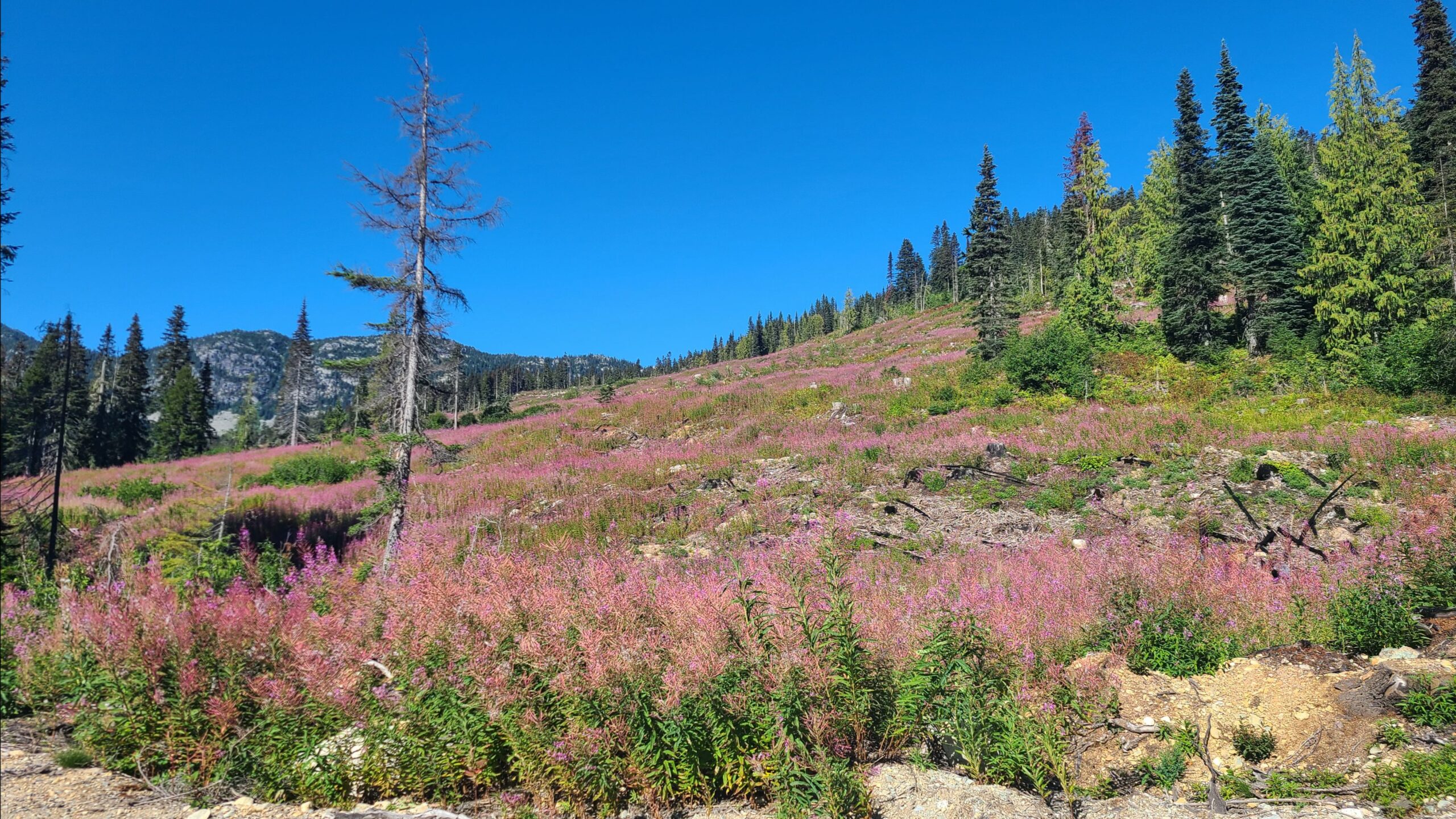Photo: Owl Creek one year after the burn. Photo credit: Líl’wat Forestry Ventures.
Mount Currie, B.C. – Jordon Gabriel, Forestry Technician with Líl̓wat Forestry Ventures (LFV) and University of British Columbia research lead, Dr. Tonya Smith, recently co-wrote a powerful article for the Forest Professionals BC (FPBC) Magazine. The article, published in the Spring 2025 edition, provides an overview on the history of Indigenous forest management by Líl̓wat Nation members, with a focus on LFV’s current work to manage the forest for multiple values, utilizing traditional methods like cultural burning.
“As we embarked on telling this story, we felt it was important give a voice to First Nations who had been silenced and shine a light on the work being done today by Líl̓wat Nation and LFV on holistic forest management that takes care of both people and the land in a safe and sustainable way,” said Smith. “We are honoured to have been given the opportunity to write this piece to contribute to the growing recognition and respect for Indigenous knowledge, and spark conversations around how we can support the leadership of these knowledge systems in forest management and policy-making.”
Líl̓wat people have long known that fire and cultural burning practices not only sustain biodiversity but also enhance the production of important food and medicine sources. This knowledge is now being reintroduced, revitalized, and shared with new generations and the broader public. The in-depth article serves as a reminder that cultural fire practices — once banned and criminalized by colonial governments — are crucial to the health of our lands and communities.
“The practice of cultural burning was and still remains a way for us, Indigenous People, to care for our forests utilizing a holistic approach that attends to multiple values – social, cultural, economic, and environmental,” explained Gabriel. “Through this article, we wanted to emphasize the importance of government working with First Nations communities to manage resources and reintroduce fire into ecosystems for better wildfire management while also highlighting the potential for collaboration between Indigenous knowledge and contemporary science in forest management for a more effective and sustainable approach.”
The article further sheds light on the ongoing efforts from LFV, including bringing cultural burning back to the land and conducting critical research using a ‘Two-Eyed Seeing’ approach, bridging Indigenous and Western scientific practices.
“I am grateful to the Líl̓wat people for sharing their wisdom and experiences with us. Thank you to those working on the land to make these practices a reality,” added Smith.
Altogether, the research and cultural practices of LFV provide a clear model for how Indigenous-led forest management can help make decision-making around good forest management easier and more efficient and further create more sustainable, resilient ecosystems that benefit all communities — Indigenous and non-Indigenous alike.
To read the full story, visit: https://www.fpbc.ca/wp-content/uploads/2025/03/2025-BCFP-Spring.pdf
For additional information on the project or on Líl̓wat Forestry Ventures, contact
Aleece Laird, Communications Liaison, aleece@amplifyinc.ca | 250.574.0221

